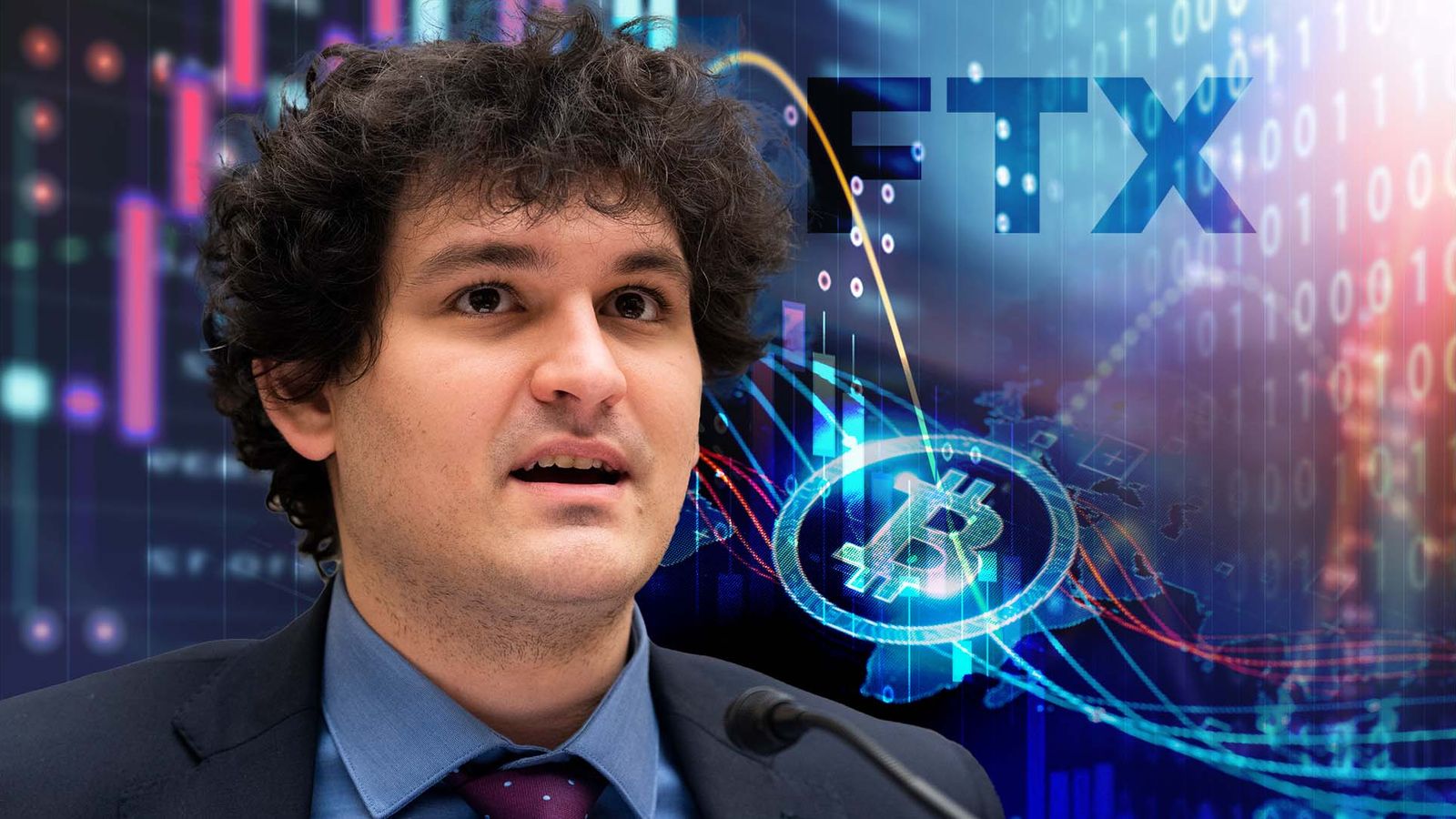“I’ve had a bad month.”
Said with the understated manner of a man who had simply forgotten to put the bins out for a few weeks on the trot, that was FTX founder Sam Bankman-Fried‘s assessment of a period that saw his star-studded £21bn cryptocurrency empire collapse in the blink of an eye.
From one of the world’s biggest digital currency exchanges to filing for bankruptcy protection in just three days, Bankman-Fried oversaw a spectacular implosion that – almost exactly a month later – saw him arrested in the Bahamas and charged with defrauding investors in the US.
How did we get here?
FTX was left teetering on the brink of insolvency in early November when larger rival exchange Binance dramatically withdrew from a non-binding bailout offer.
Citing “corporate due diligence” and reports of “mishandled customer funds” at FTX, the company walked away, sending its ailing competitor’s native crypto token FTT into oblivion as investors rushed to withdraw funds.
It came after reports that the US securities regulator and Department of Justice were investigating FTX’s handling of customer funds and crypto-lending activities.
With no other offer on the table, FTX was forced to file for bankruptcy proceedings and its founder, the one-time “Crypto King” quit as chief executive.
Why did FTX end up in such a state?
It cannot be stressed enough how incredible the speed of FTX’s downfall has been, given it had more than one million customers, sponsored sports stadiums, and had a growing collection of celebrity endorsements.
Among them were tennis star Naomi Osaka, comedian Larry David, and NFL legend Tom Brady, while reports suggested that Taylor Swift was being lobbied for a deal just weeks before the exchange fell.
Bankman-Fried himself was used to rubbing shoulders with the elite, having appeared on stage at an event with former prime minister Tony Blair and ex-US president Bill Clinton (who has an unfortunate habit of making such appearances with soon-to-be disgraced tech entrepreneurs).
The trouble started because of FTX’s close ties to Bankman-Fried’s first business, Alameda Research, which leaked documentation suggested had a significant amount of FTT on its balance sheet.
FTT, the token created by FTX, was designed to offer discounts and incentives to the exchange’s customers, raising questions about the health of Alameda and spooking Binance boss Changpeng Zhao.
Mr Zhao, who had been an investor in FTX, announced Binance would sell the $529m (£430m) of FTT on its books, lighting the spark that would become the fire burning down Bankman-Fried’s empire.
What have we learned since the bankruptcy?
Allegations of shady business practices have since emerged, including:
• FTX used customer funds to cover losses at Alameda
• Bankman-Fried established a “backdoor” to move money out of FTX without other executives being alerted
• Upwards of $8bn (£6.5bn) in customer funds has vanished from the exchange
New CEO John Ray, who led the energy firm Enron through bankruptcy proceedings in the early 2000s, said of FTX: “Never in my career have I seen such a complete failure of corporate controls and such a complete absence of trustworthy financial information as occurred here.”
At the same New York Times event where he acknowledged that he’d “had a bad month”, Bankman-Fried admitted “clearly I didn’t do a good job” at running FTX.
He says some customers may only receive 20% to 25% of their savings back.
Read more:
‘Cryptoqueen’ added to FBI’s Most Wanted list
Kim Kardashian charged over crypto promotion
Where does ‘SBF’ and crypto go from here?
Next stop for the 30-year-old who became known as “SBF” is a Bahamas magistrates’ court, with FTX having been based on the Caribbean island since 2021.
He also faces extradition to the US.
As for the crypto market, the collapse of FTX – which had been praised for making it so easy for people to buy cryptocurrencies using traditional money, with a simple interface and small transaction fees – has pushed calls for greater oversight into overdrive.
Brian Armstrong, chief executive of another crypto exchange, Coinbase, told Sky’s Ian King last month the world’s financial hubs must improve their “crypto-specific regulation”.
He admitted the collapse of FTX had “set back” crypto’s road to becoming a legitimate asset class.
Amber Ghaddar, co-founder of Alliance Block, told Sky’s Big Ideas Live event that the crypto industry had allowed people to make “the same mistakes that led to the financial crash of 2008”.
“There’s no risk management, no internal controls,” she said.
“If the regulation that was created after 2008 to limit the power of the banks and hedge funds were applied to these crypto companies, it would have been less shocking than what we’re seeing.”



